September 19th, 2010 · No Comments
The fact that London is 25% green absolutely boggles my mind. I love that the English place such an emphasis on green open areas, even in the middle of their capital. One of my favorite days during our trip here incorporated an afternoon in Regent’s Park. After my walking tour I went to the park, armed with a book and a sunny day. I then sat there for an hour and read. And while I did not get much actual reading done, I experienced something far more important – the breakdown of English cultural barriers. It started when someone’s puppy wandered over to me. Instead of calling back their dog, the owner just smiled at me and kept going, trusting that I would respect their pet and that it would go back to its owner when it so desired. This complete warmth towards a total stranger is not something I had experienced yet in the usually reserved London public sphere.
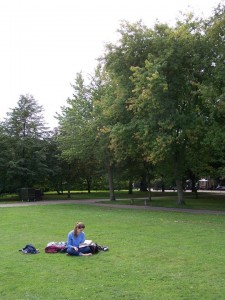
This breakdown of reserve was apparent the more I walked around the park. Everywhere I looked there were older gents playing with their dogs, mothers entertaining their children, and couples walking around paying more attention to each other than to their beautiful surroundings. While Kate Fox always talks about the English “social dis-ease” the atmosphere of Regent’s park was completely the opposite. Both at Regent’s Park and at St. James’ Park the wealth of examples of the English comfort, not with just themselves, but with those around them, showed more warmth than I am accustomed to in Los Angeles. It is almost as if the British use their parks as a place to escape the normally tight social boundaries regarding affection and interaction with strangers.
Parks also serve to remind the English that they’re inherently country folk. In times of crisis throughout English history (like the Plague), those who could afford to would flock to the countryside and to their agrarian roots. The English find safety in green open spaces and in city filled with smog and where everyone is in a constant rush, there has to be an emphasis these parks. These parks help make London English and help to remind English Londoners that they are English.
Tags: 2010 Amy
September 19th, 2009 · No Comments
Perfect space. Invasion of perfect space. Straight alleys, grass cut to the perfect inch, clean fountains with not even a leaf floating in sight, trees planted in a straight row with carefully calculated distance. Regent’s Park is one of the most perfect parks in existence, so are the Green and Hyde Parks. Coincidently they are all located in London, England. After spending a month in London and visiting the parks as well as having a few class sessions held in Regent’s Park I have learned to appreciate the high mannerism of English parks. After all, I am used to Central and Prospect Parks in New York City, where every couple of steps you will find young adults on blankets, playing music from their speakers on the highest volume possible, dogs running freely, and tramps, as the English like to say, trying to find a spot to spend a night. In London parks it seems that all of the above would be considered as poor behavior in a park. William Pitt said “The parks are the lungs of London,” therefore, I believe that the parks that we have explored are great representations of the London culture and its society.
I want to begin by discussing Green Park and Hyde Park which are both part of Royal Parks of London. Both are of great size; however, Hyde Park wins with 350 acres of space. Upon entering the parks, I was overwhelmed, by not only the perfection of the parks but also the beauty. In the busy and crowded London, it is surprising to find that such large, green spaces that provide a sense of escape. Escape. Throughout centuries, parks seem to do just that, provide leisure and relaxation for Londoners, no matter what their background or social class. With fountains, lakes, and open space for exercising, parks provide the “personal space” for every individual. Although Regent’s Park as well as the other two have a sense of perfection, it seemed that the London residents are comfortable using the park for their daily escape for jogging, laying on the grass, walking their dogs, or just getting their daily dose of fresh air.
As I have mentioned before, the care that goes into maintaining the beauty of London parks is of great task. It reflects the importance that parks have on the society, as well as the importance of order for the English. Parks are also the representation of London’s history. Green Park, besides being currently connected to the Buckingham Palace and its gardens, is said to have originally served as a swampy burial ground for lepers from the nearby hospital at St. James’s. Henry VIII enclosed it in 16th Century, after which the area was surrendered to Charles II who made it into a Royal Park. At the present time, there are government offices and corridors, linking the nearby Royal palaces, beneath the east side of Green Park and continue to run to the south.
Although at first I was uncomfortable with the perfection of the London parks and its well groomed grounds, I learned to appreciate the care and the history of each park. Residents of London have made parks as spaces of their own. I still prefer the smaller squares around Bloomsbury area that provide more intimate feeling, but I can say that there are no parks in the world like the ones here in London.
Tags: Jeyla
September 14th, 2009 · No Comments
-
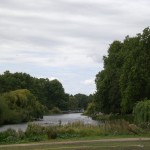
-
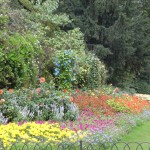
There’s nothing I love more than to be outside on a beautiful day. Growing up on the James River has allowed me to venture down for a “nature walk” whenever I’m home. I’ve been spoiled in that sense. So coming to London, a city full of parks seemed like a happy medium to me. I could participate in the big city scene and still enjoy my beloved green spaces. However, some of the parks have been ‘disappointing’ in that fact that they are so unnatural. What I mean by that is the exact planning and placement of walkways, restaurants, water features, ect. Sure, it’s a great place to exercise and push a pram along a scenic pathway (complete with perfectly manicured lawns!), but it’s not what I am looking for in my ideal park. I can appreciate the effort and money the city spends on these places. It’s a great place to take a break from the hustle and bustle of London and sit on a wooden bench to read your paper. But I find it incredibly strange that people are almost discouraged from sitting on the grass. Instead, deckchairs are available for hire from April to September. Another thing that really bothers me is the rule against ball games. The parks are great place for a pick-up 5 aside football (soccer) match… oh wait, you can’t play ball in most of these places. Why? I’m the kind of person who goes to open green spaces to relax. When I go to a park I want to be able to run free, lounge on the grass, play games, read and generally cut loose. I feel like I can’t do that here. I’m directing most of this rant towards St. James’s Park and Regent’s Park. Great flowers, too many rules.
I participated in the “Parks” tour group last Thursday and I absolutely loved Hyde Park. This 350-acre space in the heart of London still has most of the aspects I just discussed, but it has another side. In parts of this former royal hunting ground the grass uncut and long, the people walk off the path and you can even go swimming in the Lido. Maybe it’s just the sheer size of the grounds, but this park just “feels right” to me; this is how a park should be. I also noticed the large variety of wildlife at Hyde Park. Besides the normal flocks of pigeons, there were also surprising amounts of waterfowl living in the Long Water. The variety of activities was also impressive. One can do anything form tennis to horseback riding in this park! I hope I can go back for a little bit tomorrow after lunch and explore a bit more. Although I have some problems with a few of the Royal Parks, I cannot deny that they are a wonderful addition to the city. I am looking forward to the open air of Norwich… at least I can play some football there.
Tags: Grace
So I’m a bit behind in the posts, and I actually have things I’m supposed to write about rather than just blab on about feet or other nonsense. Qualls wanted us to look at immigrant communities. By wondrous fate, Audrey and I came across a Jewish festival in Regent’s Park. The festival was called Klezmer in the Park, a Jewish music festival. The MC was fantastic and quite hilarious; he even sang a Yiddish rendition of of New York, New York. He brought up an interesting point though: what would an English rendition sound like? With my humble German abilities, I was able to ascertain that he was not speaking in a direct translation, and I wonder how a song(in general) gets changed, either culturally or linguistically, when it comes to a different country. This seems to apply even more prevalent for a song like New York, New York, which is so heavily tied into the culture of a city and its lexical nuances. Back to immigrant communities. It was quite a sight to see, truly. Jews and non-Jews; British and non-British; all dancing and laughing together in Regent’s Park. Such a feet would not have been possible or even dreamable only a short time ago. And yet there it was, in all of its schmutzing glory. What I did find interesting though, was half way through the concert, the MC calls all the male bachelors too silly to avoid his gaze up on stage. While up there, they were bombarded with what I can only imagine were questions a Jewish mother would ask (I have no such mother, so I’m not really sure). What was sad was that no one liked the Jewish men, rather preferring a gardening British non-Jew (evidently Jewish men don’t do well with their hands, I’ll have to ask Barron). But I think this brings up an interesting idea, and one we have touched on before: how do you maintain your cultural identity while continuing to integrate (thus attaining privileges like a festival in the park). How do you maintain a culture that is based around the maternal family line if people are marrying non-Jewish women? While the festival did not speak for the entire British-Jewish community, I would like to believe that it had some microcosmic properties. Next Audrey and I went to Queen Mary’s Garden; it was quite lovely, beautiful flower patches with little roads cutting into the wooded areas, very nice for intellectual conversations and peaceful walks of contemplation, recommended to all.
Now onto what I wanted to talk about: tourists. Bloody tourists. So buddies of mine arrived here a week or so ago, and it’s really startling how loud and boisterous they are. But in saying this, I have to laugh because I cannot be so bold as to say I have transcended the lines of tourist and Londoner–that would be absurd. How snobby does that sound? Quite. I wouldn’t go as far as to say I’m going native, but I think I’ve definitely fallen into a slot of participant observation. But I mean, this is the dream. If I could do ethnographic work for the rest of my life, earning enough to eat and not get trench foot, I would die a happy man. Saddly I realize that isn’t the case, and I’ll just end up behind some desk. So I’ve got to play dress up for as long as I can before the bell tolls, hopefully not making too much of a fool of myself in the process. Keep calm, carry on.
Anyway, cheers
Tags: Andrew R
There are a total of eight Royal Parks within all greater London: St. James’s Park; The Green Park; Hyde Park; Kensington Gardens; Richmond Park; Greenwich Park; The Regent’s Park and Bushy Park. Thus far, I have visited three of these: St. James’s Park; Greenwich Park and The Regent’s Park. Each park was very different, yet shared a similar history.
St. James’s Park, originally created by King Henry VIII as a personal deer park for hunting, is located in Westminster. The park has been remodeled several times, including once for King Charles II in the 1600’s and again in the first half of the 1800’s by John Nash. The closest tube stops include Piccadilly Circus, Charing Cross and, of course, St. James’s Park.
This park is absolutely massive. You could easily spend an entire day here. Perhaps the most interesting feature of this park is its wildlife. There were waterfowl of all kinds paddling and preening in around the long lake that stretches through the park and placards along the way that discussed each species. The asphalt walkways circling the lake contain markers that indicate that the Princess Diana Memorial Walk trails through the park. With all the flora and fauna found inside St. James’s Park, it only seems appropriate to commemorate one of Great Britain’s most beloved members of the royal family here, amidst such beauty.
St. James’s Park is a popular spot for tourists and locals alike. There were many families, especially, snapping pictures of the scenery, but also native Brits jogging or enjoying lunch or a book in the park. What I did find interesting was that there were very few non-whites in the park. I remember seeing one tourist family of what appeared to be an Indian descent inside the park, posing for family snapshots by a knotty tree, and a two black women with strollers and little, skipping girls around the age of five, who walked along the sidewalk on the outskirts of the park, but never entered it.
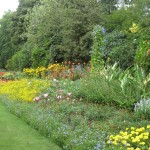


Greenwich Park is equally interesting. We walked through this park on our way to The Royal Observatory, which is located almost in the center of the park. The Observatory was commissioned by King Charles II (see hyperlink above) in 1675 and was designed by Christopher Wren, the architect who was responsible for countless famous buildings around London including St. Paul’s Cathedral and others circa the Great Fire of 1666. The park is inaccessible via the tube, but many buses such as the 188 and 53 run through Greenwich at frequent intervals.
This park, which is divided by the Prime Meridian features much more open space than either St. James’s or The Regent’s Park. There are large expanses of lawns – slightly browning in areas – with trees dotting the landscape throughout, but no fences, hedges, walls or other structures that create intimate spaces within the park. As we walked through the park I noticed many families and couples strolling through the park, and several joggers. There was a friendly yet rather skinny dog sniffing around the sneakers of several students. He carried a ball in his mouth and seemed to plead with his icy blue eyes for a playmate. He wandered around without direction and I wondered if he was blind, or homeless, and watched the ribs shift under his taut skin.
The abandoned dog, the slightly sunburned grass and the lack of flora cast a feeling of melancholy upon me as I walked through the park. I didn’t feel joy or peace in Greenwich Park as I did in St. James’s or The Regent’s Parks. Even the view of the city from the top of the hill upon which the observatory is situated depressed me. It is a view full of skyscrapers, power plants, power lines, smoke stacks no longer in use. When I am in the city for too long, I crave green space, but in Greenwich Park, I found myself preferring the city.
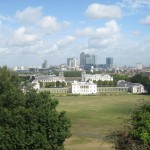
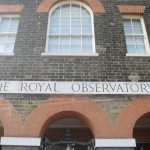
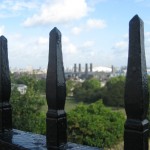
The Regent’s Park, located between Paddington and Camden Town, is accessible via several tube stops, including; Marylebone, Great Portland Street and, of course, Regent’s Park. The park was originally another of King Henry VIII’s deer gardens (see hyperlink above) and features the Queen Mary’s Garden, an area of the park blooming with over nine thousand begonias.
The Regent’s Park is one of the most stunning places, if not the most, I have been lucky enough to visit in my life. The walkways reach out through rows of shaped cylinders of shrubbery and tall hedges line the walkway, creating walls of green that flank beds of bright flora. Fountains pour out clear water that glints in the sun, cascading like icicles ripped from rooftops in the winter. There are areas reserved strictly for children, areas with cafes, an outdoor amphitheatre and a community sports and recreation centre. The overall feeling that I had being in the park was one of peace and serenity. Car horns, sirens, the pounding of joggers’ feet and the wails of children with scraped knees or simply a poor temperament could not be heard in the near silence of the park. For one who is quick to grow weary of the London hustle-bustle, The Regent’s Park serves as the quintessential getaway.
All of the Royal Parks I have visited thus far each have their own distinguishing characteristics, and a unique essence. But don’t take it from me. Hope on the tube and go find yourself some green.
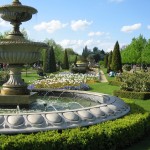
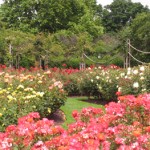
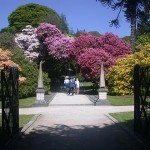
Tags: Anya












